“On Re-discovering the deep rootedness of Dance” : an Interview with Mrs V (Vijaya Nadesan)
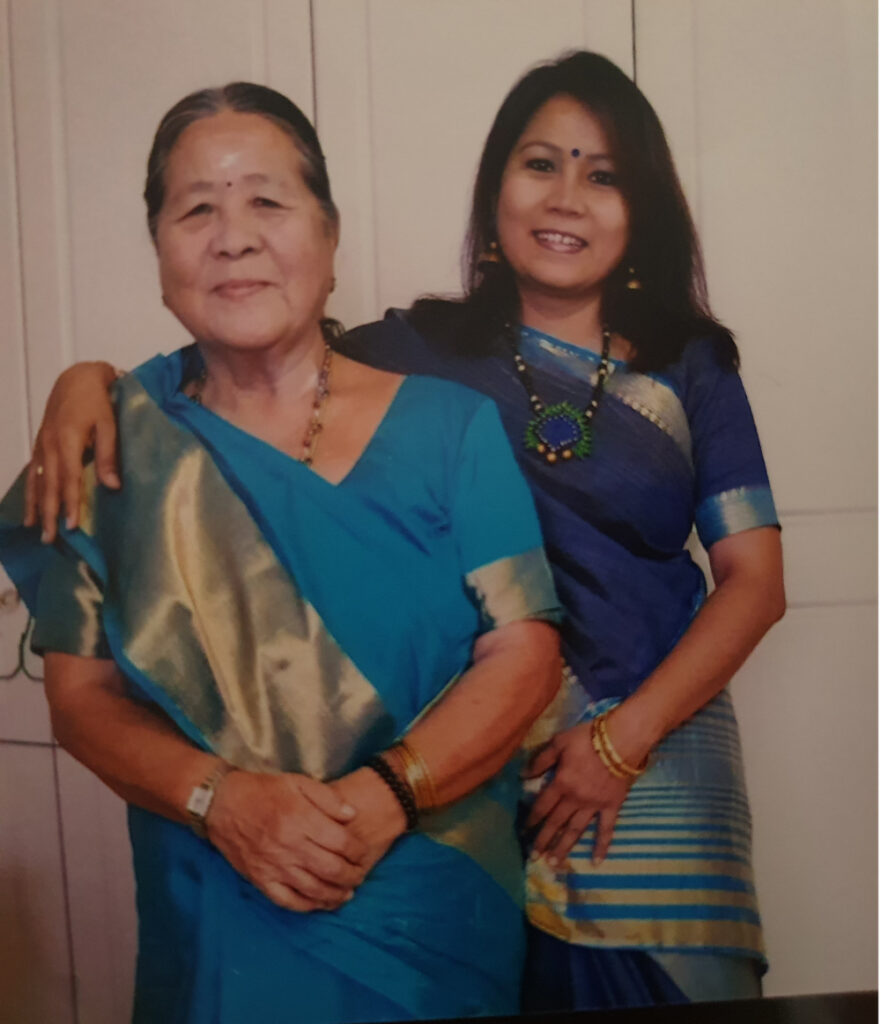
“I want my dancers to be informed and creative thinkers. They must explore, be uncluttered in their mind and apply the techniques of dance with skill and bring their audiences to a state of profound consciousness. This is the deep rootedness of Bharatanatyam and it has been my privilege to gain this knowledge and association,” says, Mrs Vijaya Nadeson, the Principal of Apsaras Arts Academy. Read on to learn more about her journey of this re-discovery. Growing up on Hindoo Road in the 1970s was idyllic. Our family of seven lived alongside Chinese and Malay families in quarters as my father, a senior foreman who oversaw labourers working in the area. A fire broke out in 1978 causing us to lose much of our valuables and we moved to Jalan Besar temporarily and finally settled in Towner Road after much hardship. During this period, my mother had enrolled both me and my sister for dance classes at the nearby Tanglin Club. It was not known to us that these classes were run by Apsaras Arts. But after the fire, our classes stopped. A few years later when I turned 9, my mother has started working and had taken interest in Tamil theatre [she went on to be a prolific actor on stage and television] and this time at Kallang Community Centre, again there were dance classes. My teachers were Muthulakshmi and Vijayarani. I performed many group items with other students. At 17, the teacher changed. Now, it was Neila Sathyalingam. The teaching style was substantially different and she got me to join the rest of her students at Cairnhill Community Centre and thereafter to her classes at People’s Association. I became one of the group dancers of Apsaras Arts, representing Singapore at many local and international events. The annual Chingay Festival was a highlight with larger than life, fantasy themes which gave Apsaras Arts and Mami recognition and acclaim. We travelled to many cities – Papua New Guinea, China, Japan, Hong Kong, Macau, Thailand. From Pushpanjali to Thillana to combined group dances with fellow Chinese and Malay dancers, we did it all. Our dance performances were launch-pads for Singapore’s branding as a multi-ethic cultured society. Towards the end of the 1980s, Mami also created noteworthy Indian dance-musicals involving local talents such as Meenakshi Kalyanam”, “Navaratri Nayagi” and “Ganesha.” Creating these works required extensive research, designing costumes and jewellery, finding sponsors to fund overseas tours to India and Sri Lanka, creating brochures and program booklets. Mami roped me for many of these assignments alongside dance. This work was also part of being a performer. She would say, “Girls, I want you to know and learn everything.” My sustained interest in Bharatanatyam became rooted with Neila Mami. Everywhere we went, Mami was with us, taking care of our needs, ensuring we were safely dropped off after a late-night rehearsal and a constant during all our overseas tours. She never left our side. My parents trusted her completely and were supportive of all the initiatives I embarked on with Mami. During this time, the Sathyalingams launched RasiSilks, a saree store with a difference. A venture ahead of its time. Working with an American designer, Sandy Edsall, incorporating Indian weaves such as Kanjeevaram, Mulberry, Tushar with distinctive motifs of peacock or lotus, a western clothing line also morphed alongside an exquisite saree collection. Mami roped me in to model these designs in print magazines, catalogue collections and also to be the front-runner for catwalk shows she organised to showcase the innovative range at RasiSilks. Many of the shows received great reviews cementing Mami’s design ideologies and styling skills which married traditional aesthetics with modern trends. Although she had received the Cultural Medelion in 1989, these development years resulted in her using her prize money to create her magnum opus, “Kannagi.”in 1998 which combined dance, music and spoken drama, a first in the local arts scene. Marriage and children came for me by then . Both Mami and Mama (Sathyalingam) were personally involved. As the family I joined also had roots from Sri Lanka, they took responsibility to guide me on their customs, traditions and meeting the expectations of my new in-laws and husband. It was not difficult for my new family to in turn support my continued dance career and they backed everything I did with the Sathyalingams. By the 2000s, Mami had gained greater confidence to navigate the changing society and tastes. Her choreography style began to adapt to incorporate elements of fusion and she would deftly use lyrically and melodically rich film songs to create items that would appeal to a mass audience. It distinguished us, Apsaras Arts as a serious dance company with semi-professional dancers that became notable for aesthetically pleasing works that was traditional, with a modern sensibility. We did many programs that combined instrumental pieces from the Cineworld with folk dances of Nagaland, Tamilnadu and traditional dances with fantasy costumes that brought to life, creatures and animals like swans, snakes or metaphorical emotions within the dance idiom like Navarasas, focusing on the negative ones like jealousy, anger and greed, easily relatable to our audiences. All of these formed the genesis of the thematic concept work that Apsaras Arts is known for and continues to do today. With this extensive exposure and mentoring from Mami, I became poised to begin teaching dance myself. She started to give me more assignments and over time, I took over the dance training she started at schools, through AEP (Assisted Education Program) and CCA (Co-curricular Activities). This challenging work, often involving non-Indian students with little or no background in Indian culture or dance which pushed me to choreograph and create thematic ideas through research and I was often guided by Mami’s advice, “Simplify the costumes, amplify the techniques.” Over the years, the schools I have worked with including Cedar Girls and St Anthony Cannossian Secondary Schools have won Gold with Honours for Indian Dance at the annual Singapore Youth Festival Inter-school competitions. Some
From the Book Shelf July 2020
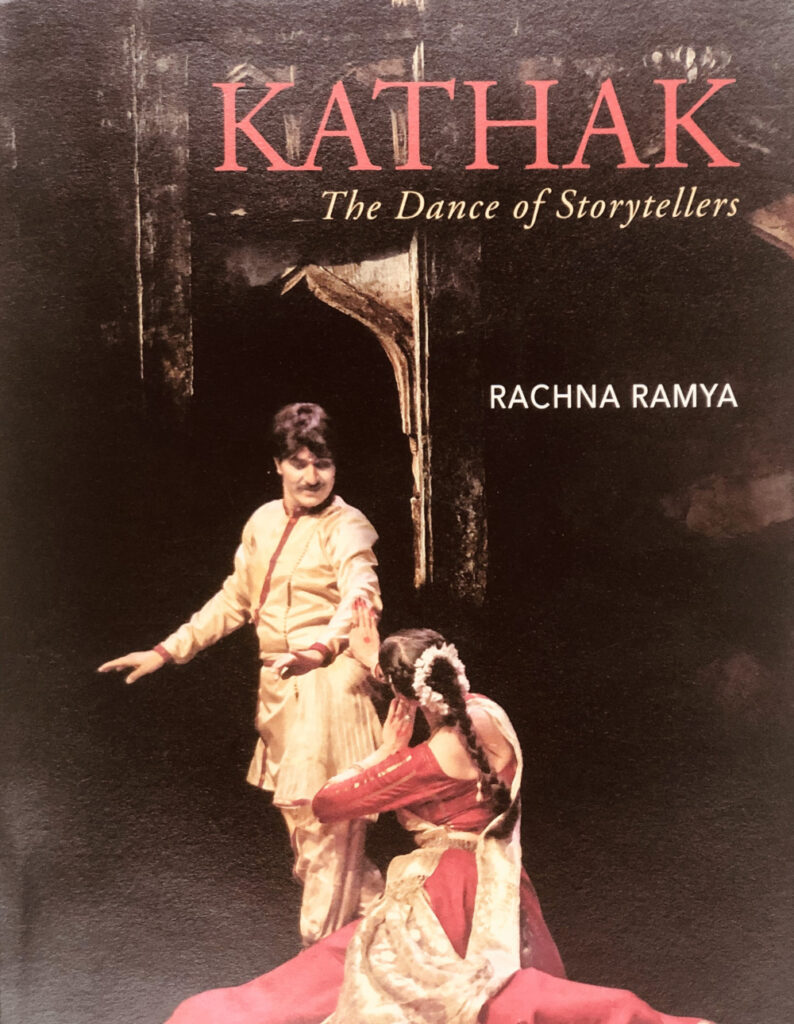
KATHAK The Dance of Storytellers By Rachna Ramya Kathak – The Dance of the Story Tellers explores the philosophical and practice aspects of Kathak dance – its origin, development and techniques. Investigating this compelling dance style from cultural and historical perspectives, the book delves into the essential principles of Kathak, its schools and major artistes, the format of Kathak performances, repertoire, Kathak music, predominant trends in training, and the system of practice through the lens of theory and application. A rare resource, the book is a comprehensive read for students, dancers, teachers, and dance lovers. About the Author Performer, choreographer, author and educator Rachna Ramya has studied Kathak under Dr Maya Rao and the Jaipur style of Kathak under Pt Rajendra Gangani, both recipients of Sangeet Natak Academy Award, India. She is also trained at the Natya Institute of Kathak and Choreography in New Delhi, India. Currently, she is teaching a course in dance at Trinity Collage in Hartford, Connecticut, USA. She is als the artistic director of Sumbhaav School of Kathak Dance.
Añjasa – Unravel the Wonders of Buddhist Monuments
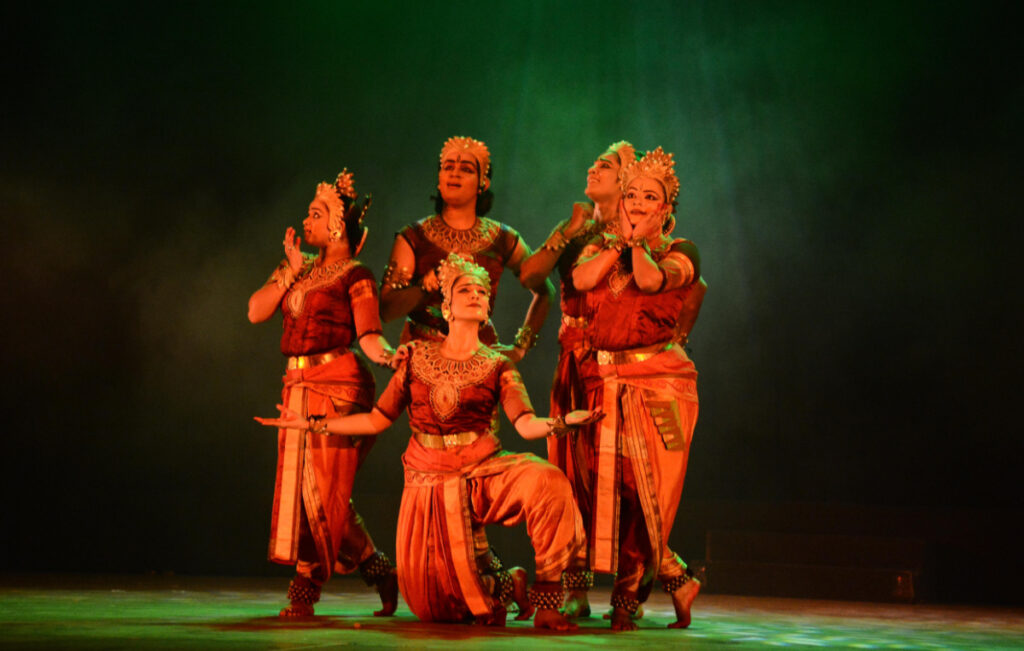
By Aravinth KumarasamyAnjasa means “path” in Pali, and this production has led me and the artistes along a memorable journey, understanding, admiring and appreciating the spirit of Asians in their pursuit in search for peace and enlightenment. The “path” to the making of Añjasa has been very fulfilling,” says, Aravinth Kumarasamy, Artistic Director. This production has taken Apsaras Arts Dance company along a journey to various venues and festival in Asia and Europe, and this July we are delighted to bring it live on the digital SISTIC live platform. Añjasa is a continuation of the vision of the earlier dance production Nirmanika – The Beauty of Architecture ( which premiered in 2010) which has been on many international tours. Following the success of Nirmanika, Añjasa, has been conceived as a sequel. Exploring and researching the beauty of Asian Buddhist monuments and Buddhist architecture has been an enriching experience, reliving my childhood days in Sri Lanka. Bharatanatyam as a dance form relies heavily on the iconography and the narratives of Hinduism. Conceiving and choreographing Añjasa, a Buddhist theme in the language of Bharatanatyam has been an interesting experience. The concept Anjasa consists of 10 beautiful elements Anjasa means “path” in Pali, and this production has led me and the artistes along a memorable journey, understanding, admiring and appreciating the spirit of Asians in their pursuit in search for peace and enlightenment. The “path” to the making of Añjasa has been very fulfilling. Anjasa has taken Apsaras Arts Dance company along a journey to various venues and festival in Asia and Europe, and this time has brought the production to digital presentation We are delighted to announce the launch of the upcoming digital live showcase of this acclaimed 2015 production where the audience will journey through Bharatanatyam expressions and movements that depict monuments including Mahadevi Temple in Nepal, Bodhgaya Mahabodhi Temple and Sanchi Stupa in India, Vattadage in Sri Lanka, Shwedagon Pagoda in Myanmar, Bayon in Cambodia, Borobudur in Indonesia and Wat Pho in Thailand.This thematic dance presentation will also cover the influence and impact of Buddhist emperors, Asoka and Jayavarman VII who were iconic in the spread of Buddhism throughout Asia.I am reminded of one of Buddha’s sayings – “It is better to travel well, than to arrive”. I sincerely hope that you will enjoy this journey across Asia admiring the wonders of Buddhist monuments through dance and music in Añjasa.
From the Travel Diary
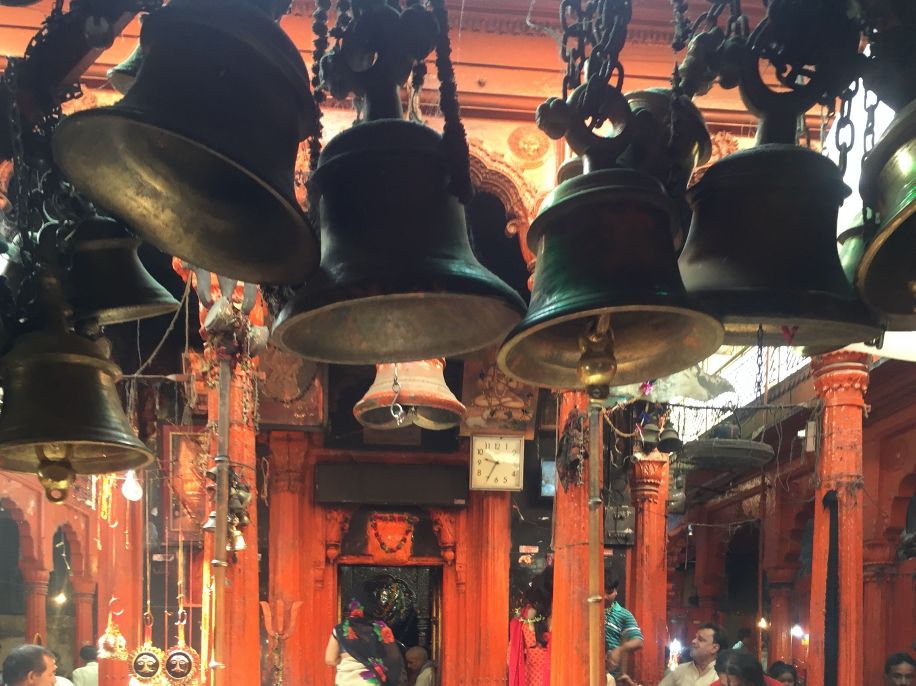
By Meera Balasubramanian Having been associated with Apsaras has given me a number of opportunities to travel around the world and perform in different and prestigious venues. One such tour was the mega India tour where the team Apsaras Arts travelled around India for one whole month and performing in various cities. This was a very special and memorable trip for all of us as we were under one roof for the whole month, where We made a lot of wonderful memories through the entire tour and a month filled with fun, laughter, food and of-course dance. At the end of monsoon season, September is one of the most colourful months in India, with a lot of festivals lined up from Dussera to Diwali. The atmosphere during this period is electric filled with joy. Amidst the high energy atmosphere, we were to perform four thematic dance productions from Apsaras, namely Anjhaasa, Alapadma, Adam Arul Jothi and Ramayana. “Welcome to Bengaluru, ladies and gentlemen” The pilot announced over the PA , I was a bit excited and nervous thinking about my kids back home and while looking forward for the long trip ahead. I set outside the aircraft, the cold September breeze of Bangalore hit me. It was a pleasant weather. The journey from the airport to the guest house bought back a lot of memories from the time I spent in this city of (no-more) gardens. Thanks to our sponsor Mrs Rhama Sankaran for hosting us and making our stay comfortable. Me and my friends were tired from the journey and jet lagged, but we had to get ready immediately for our first performance of our tour. Back from the days I spent in Bangalore, It was always my dream to perform in the prestigious Chowdaiah hall. It turned out to be a wonderful and energetic performance. It was a successful show and encouraging reviews in the local news papers. You get a high and elated feeling after the successful show, clubbed with the excitement of spending time with the gang of girls under a single roof is recipe for fun, happiness and endless banter. It was going to be stressful with all the travel and performances lined up, its essential to manage stress and stay healthy. Our Artistic Director, Mr Arvinth Kumaraswamy had organised yoga sessions to keep balance between mind and body. The early morning yoga sessions helped a lot , to relieve tiredness, infact some of us would be snoring while reaching the end of the session with savasana. Most of the day would be spent on rehearsals and workshops. The rest of the time would be spent on shopping and eating local cuisines at popular food joints across the city. Our second performance was for Shambavi dance theatre run by Ms Vijayanthi Kashi, famous Kuchipudi exponent. This time we performed Adum Arul jothi a thematic margam for a warm bunch of audience who thoroughly enjoyed it. I still remember how an old aunty who was in her late 70s probably, came on to the stage to shower her praises and blessings on us.
Virtual Events
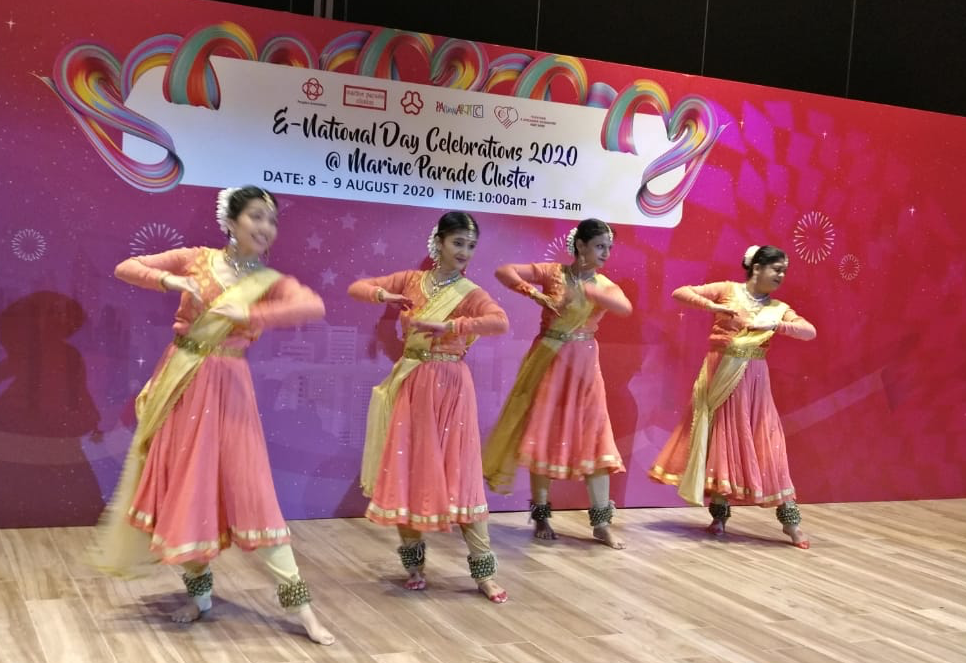
On August 7th Artistic Director, Aravinth Kumarasamy participated in a panel discussion by Aalaap Concepts named “Dance in the Now : Episode 3 Context of Curation.” The discussion centred on the idea of curation and the way online medium and technology affects curation of festival and events and the guiding principles of curation during the pandemic and beyond. Four Dance Curators across the globe, namely, Amrita Lahiri, Aravinth Kumarasamy, Manjot Chawla, Sahasra Sambamoorthi all shared insightful views on some of the current trends they have observed online and how digital curation is likely to be key for most venues in the coming year. Watch their conversation here ; Click here On August 8th, Apsaras Arts was featured on Television (in Tamil & English) as recipient of the inaugural Stewards of Intangible Cultural Heritage Award. This award was conferred by National Heritage Board, Singapore in June 2020. Watch the telecast here : Click here On August 8th and 9th, in celebration of Singapore’s 55th National Day Apsaras Arts team celebrated by participating in Marine Parade Cluster’s e-NDP programs, showcasing the diversity of the cultures at Singapore. Apsaras Arts Dance company and academy students performed Bhartanatyam, Kathak and Odissi pure dance sequences in this widely watched community event premiered over the National Day weekend on marine Parade Cluster’s Face book page. Click here Apsaras Arts also celebrated through a dance video featuring multicultural dancers who unite through the language of classical dance movements and wishes Singapore a Happy National Day. Watch this video : Click here On August 11th, on the auspicious occasion of Lord Krishna’s birth anniversary, Apsaras Arts Academy released a series of digital performance videos featuring students in celebration of “Krishna Janmashtami. This thematic event witnesses the dance performances in three forms- Kathak, Bharatnatyama and Odissi. Watch the concert here : Click here
From the Bookshelf
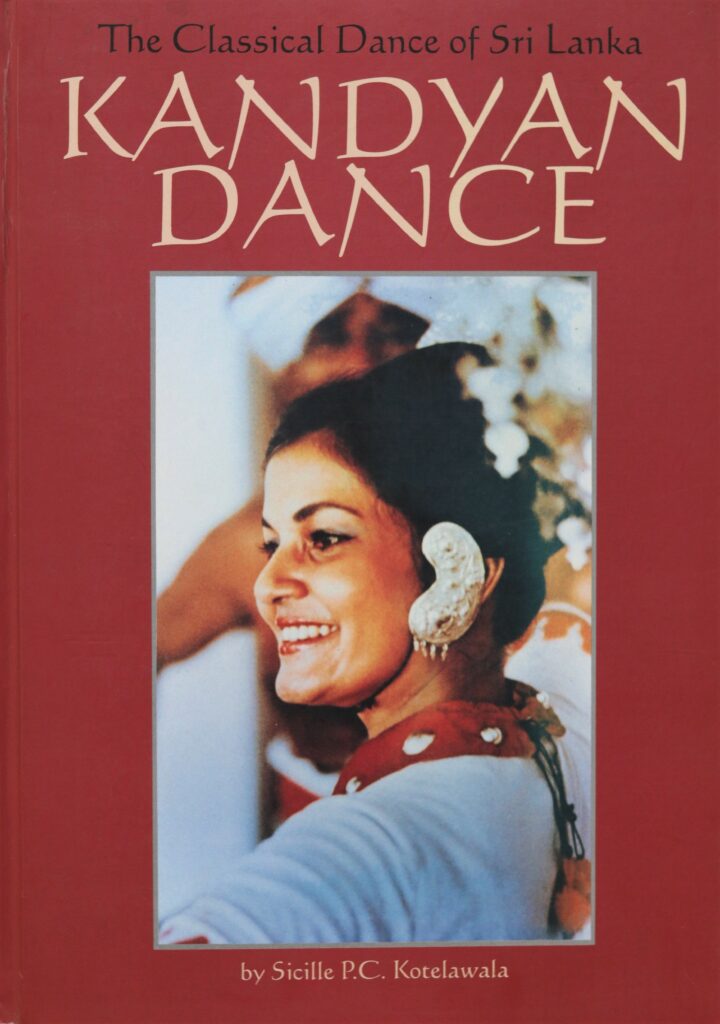
The Kandyan Dance, as it is popularly known, is a complete art form, refined and polished in the field of pure Dance (‘Nrttya’) and with a highly developed system of ‘Talaya’ (beat). It is aesthetically appealing and has won renown throughout the world as the classical dance of Sri Lanka. The cultural heritage of Sri Lanka is second to none in the world and has been sustained throughout the centuries by this resplendent dance of the Hill Country, generally referred to as the Kandyan Dance. The name Kandyan Dance consists of four distinct types – the Ves, Naiyandi, Pantheru and Uddakki. However, the term ‘Kandyan Dance’ has now come to be associated with the ‘Ves’ Dancer in his full regalia. Therefore to know about the Kandyan Dance one has to go back to one of the most ancient Folk ceremonies of Sri Lanka, the elaborate ritual known as the Kohomba Yak-Kankariya or the Kohomba Kankariya. It is the Kankariya that has given us the classical Kandyan Dance. Through a period of 2,400 years, the Kandyan Dance has acquired a refined dignity and an individuality that has become the wonder of the world.
Digital Screening of “Anjasa- Unravel the Wonders of Buddhist Monuments”
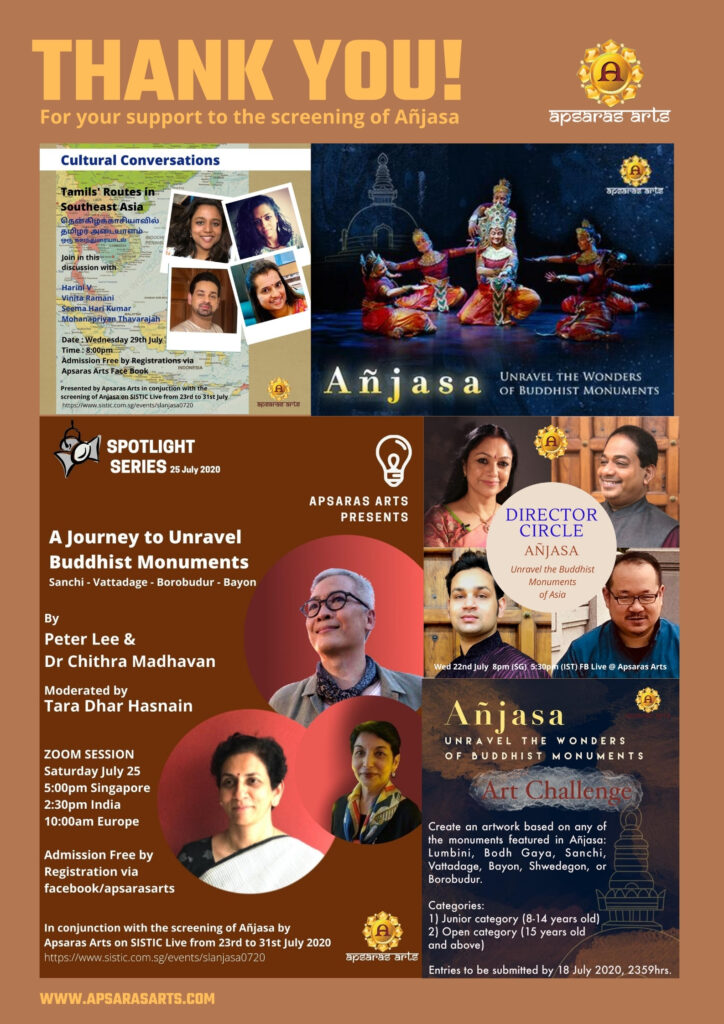
From 23rd July to 31st July “Añjasa”- Unravel the Wonders of Buddhist Monuments” was screened on SISTIC Live for viewers across the globe. Apsaras Arts production – Añjasa (pronounced as “Anyasa”) refers to “The Path” in Pali, the classical language of Buddhism explores the beauty of Buddhist temple architectures. The production takes the audience on a journey through monuments including Mahadevi Temple in Nepal, Bodhgaya Mahabodhi Temple and Sanchi Stupa in India, Vattadage in Sri Lanka, Shwedagon Pagoda in Myanmar, Bayon in Cambodia, Borobudur in Indonesia and Wat Pho in Thailand. The production also highlights the contributions of Buddhist emperors, Asoka and Jayavarman VII who were iconic in the spread of Buddhism across Asia. This dance production features company dancers from Apsaras Arts and a unique musical orchestra with music composed by an array of Singaporean artistes including Aravinth Kumarasamy who composed the score which comprised both classical Indian and Chinese instruments including the Er Hu, Yang Qin. The costumes and set design have been inspired by Buddhist iconography using color schemes of gold, saffron and red as found in Buddhist robes from India and Southeast Asia. Añjasa premiered in Singapore in January 2015 at Victoria Theatre and has toured to London, Liverpool, Manchester, Bangalore, Chennai, Colombo, Kuala Lumpur and Sydney. This digital screening is filmed at Nelum Pokuna Mahinda Raja Paksha Auditorium on 7th March 2017 presented by Ministry of Culture, Srilanka supported by National Arts Council, Singapore. Watch the dancers share their experience of the tour : Click here to watch This particular production and its show in Colombo bear special significance for the team at Apsaras Arts as it was the last production that Neila Mami blessed, as she breathed her last that same night. Watch Aravinth recall the memories of this Production : Click here To promote this digital screening, 3 unique talks were organized to showcase difference aspects of this production. On the eve of the screening, Directors’ Circle was launched. This is a new initiative that brings together behind-the-scenes insights from the people who created the production in a roundtable discussion. For this inaugural edition, Dancer-Choreographer Rama Vaidyanathan hosted Aravinth Kumarasamy (who created the concept, directed and composed the music), Mohanapriyan Thavarajah (who choreographed the dance sequences & designed the costumes) and Stanley Ang (who performed the Chinese instrument, Yang Qin). During this talk, they shared many details of their conceptualization and both Mohanapriyan and Stanley performed unique excerpts and shared the working philosophy and the research undertaken to depict the different elements of Buddhist architecture. Watch their conversation: Click here This was followed by an exclusive spotlight session with eminent heritage experts – Dr Chithra Madhavan (India), Mr Peter Lee (Singapore) moderated by Mrs Tara Dhar Hasnain (Singapore) on 4 specific Buddhist monuments – Sanchi, Pollorunuwa, Bayon & Borobudur. Here, they delved deep into the historic time period and the impact of these monuments to both the local environment and the composite identities that evolved over the centuries. This session was highly anticipated and we had over 70 attendees in a closed session. Finally, we organized a youth-oriented talk under our banner, Cultural Conversations with a session called “Tamils’ Routes in Southeast Asia.”. For the first time, this was bilingual talk in Tamil & English featuring 4 young Tamils – Harini Vee, Vinita Ramani, Seema Hari Kumar and Mohanapriyan Thavarajah who engaged and explore Tamil identity, historical routes within their roots as citizens of South East Asia. This talk allowed for open discussion on navigating fresh identities while taking cognizance of native Indian identity and layered local identities. The speakers spoke about the impact of classical India on South East Asia and how passing this on to future generations will always call for reflection and understanding of the past ideologies help appreciate and strengthen our appreciation of Tamil roots and heritage. Watch this Culture Conversation here : Click here A unique online Art Challenge was organised to garner interest in the production and the Buddhist monuments. Many young artistes participated in the junior’s category and used this opportunity to research and explore different artistic methods to recreate the monuments in charcoal, digital art, pencil work. The most popular monuments were Sanchi and Borobudur. The winners of the final round received Amazon cash vouchers and an opportunity for their artwork to be featured as part of Añjasa’s overseas tours in coming years. The many who watched this screening praised the performance and the splendour of the work created.
Review Corner August 2020 (Virtual Events)
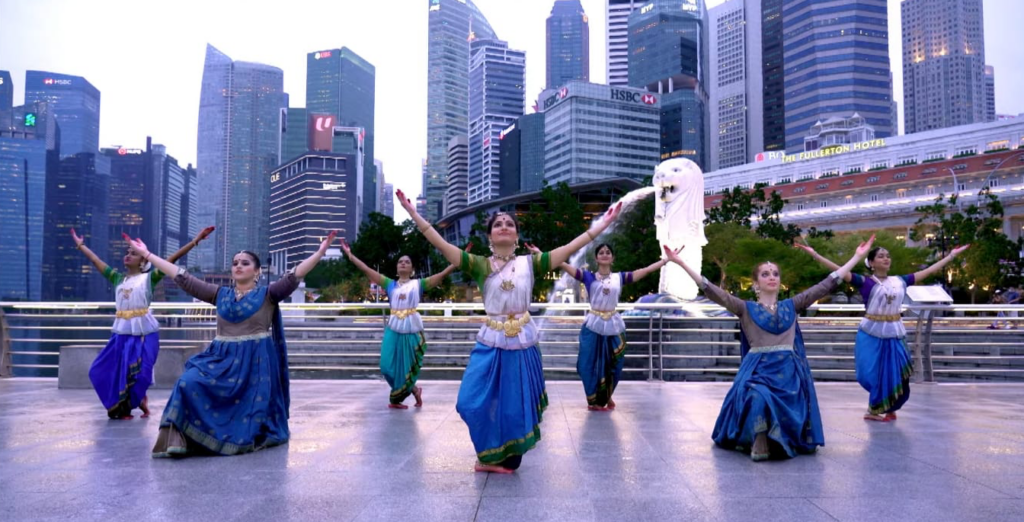
July-August has been an eventful month with the release of several digital productions supported by OurSGFund and Digital Grants by National Arts Council. Here is a sneak peek into select few beautiful locally produced creations that we highly recommend as must-watch: Stop & Smell the Roses by Maya Dance Theatre, Ripples by SIFAS and Crocodile Tears by Bhaskar’s Arts Academy. Stop & Smell the Roses By Maya Dance Theatre Stop & Smell the Roses was premiered by Maya Dance Theatre on August 10th as a screen dance performance. Conceived and created during the Covid-19 Circuit Breaker period, the project brought the stories of 17 dancers together in a dance production created, rehearsed and filmed independently from their own homes! Stop & Smell the Roses exposes the irony of our relationship with time. In our constant searching for material bounty, we negate the one thing that is limited …. Time! Artistic Director, Kavitha Krishnan, in her post production talk during a soft launch virtual event said about her own personal reflection that “Change is constant. We should not keep catching up with time, we need to slow down.” “It’s only when the whole world shuts down and we are forced into temporary lock down that we realise its true value. Do we feel restless when presented with an abundance of time? Imprisoned in a cell? Bored in the house? Or do we indulge in this newfound luxury to stop and smell the roses?” Artistic Director, Kavitha Krishnan partnered with Sharin Johry on the concept choreography and movement direction for frames, on this production. Credits: Creative Producer: Imran Manaff Music: Kailin Yong with Bharathanatyam vocal nattuvangam by Ajith Bhaskaran Das (Malaysia) and voice/music by Peni Candrarini (Indonesia) Screen dance direction by film maker/multimedia artist Yahssir M. Poetry by Aishwarya Prithviraj Poetry recitation by Ashwarya Prithiviraj, Kavitha Krishnan, Shahrin Johry Post production by Millennia Motion Pictures Watch SASTR : https://youtu.be/9QsbIP07MtU Ripples in a Storm: Reflections By Singapore Indian Fine Arts Society On August 8th, in celebration of Singapore’s 55th National Day, Singapore Indian Fine Arts Society released a music-video that reflects on how far we’ve come, unified as a community of people battling against the pandemic. SIFAS presented this Music-Dance collaboration by bringing together artistes from Singapore’s dance institutions (SIFAS, Bhaskar’s Arts Academy, Bharathaa Arts and Temple Of Fine Arts) in this youth-led collaboration. Credits: Artistic direction and choreography (Bharatanatyam & Contemporary) by Sheejith Krishna, Music composed, produced and arranged by Dr Rajkumar Bharathi and Sai Shravanam, Kathak choreography by Aamrapali Bhandari, this video features representatives of 4 organisations: SIFAS, Bhaskar’s Arts Academy, Bharathaa Arts and Temple Of Fine Arts Singapore. Watch Ripples : https://youtu.be/cQyo8pRUGWM Crocodile Tears By Bhaskar’s Arts Academy Based on a familiar tale from the Panchatantra fables, Bhaskars Arts Academy dancers created a digital production enacting three characters of a monkey and a family of crocodile dedicated to children. This production is supported by the National Arts council funds and features company dancers Bala Saravanan Loganathan, S Hemalatha and Nandhini Sathasivam Video editing credits: Soneiya Sony. Watch the Crocodile Tears: https://youtu.be/EDtilVZFxGg
Virtual Events
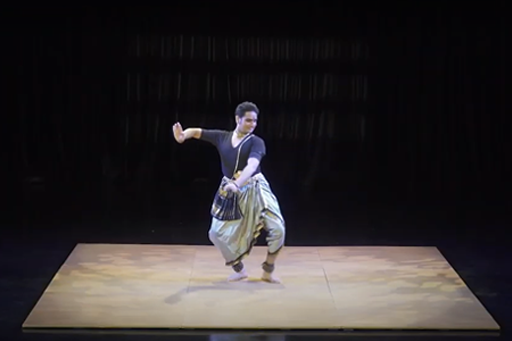
Here is a round up of digital events at Apsaras Arts over the last month. From the release of “Bhairava” in collaboration with Indian Raaga, an inaugural feature at the SPIC MACAY Singapore chapter to the Navrathri celebration by the students of Apsaras Arts Academy. The month has been busy for the Academy teachers preparing the students across all levels to perform in celebration of Navrathri festival. Subscribe to our You tube channel to follow the digital festival releases over this festive season. An International Veena Festival –Veena Mahotsavam 2020 organised by Harata Ilango Foundation for Asian Culture (BIFAC), Narada Ghana Sabha Trust & Kalakendra.com curated by Veena Vidwan Kannan Balakrishnan of Kalakendra Music. This online festival ran for 20 days from 26th September to 15th October 2020. Apsaras Arts’s Aravinth Kumarasamy performed on 3 October 2020 with overseas performers outside India under their series “Akhandam – III: Artistes from Abroad.” He performed a set of 3 ragas – “Samajavaragamana” in Ragam Hindolam, a Thiagaraja composition, followed by “Velliada Ittu Neram Ah” in Ragam Shanmugapriya and “Harivarasanam” in Ragam Madyamavathi. Watch the performance [at 6:00:00 to 6:25:00]: On October 11th SPIC Macay Singapore Chapter had an inaugural event to introduce its resurgence and new volunteers. The Zoom event featured volunteers from Indian Chapters and Australia and the leaders spoke about the movement which began in 1977 by Dr Kiran Seth and his peers. During this session, two Singaporean National Young Artist Award recipients were invited to speak about their artistic journeys. Aravinth Kumarasamy and Mohd Sufir Juwahir who both shared details of some of their dance related works and questions were posed to them by volunteers. Aravinth was asked about arts conservation in Singapore and he shared that in Singapore, arts education in local schools is increasingly curricular and the role of Indian arts has had a tremendous impact on South-East Asia. He said that much efforts by him (& Apsaras Ars) to reconnect Indian heritage and performing arts with our Asian cousins which over time has become assimilated and made Singaporean. He spoke about “Sangeetha” (the practice of Sadhana) and “Rasanubhava” which when brought together creates “Sahadya” (oneness). He also shared the positive support for local & traditional arts by the Singapore government through grants and arts housing. The session concluded with a Q&A session with participants who found the session illuminating. SPIC Macay Singapore Chapter aims to have long-term imprints on youth both in terms of life experiences and to incorporate the appreciation of the arts for a more enriching life. On October 17th, IndianRaga Singapore in partnership with Apsaras Arts Dance Company premiered a digital showcase of a solo dance item – “Bhairava” in which the popular Kala Bhairava Ashtakam slokam has been beautifully presented in a dance form by the talented artist Mohanapriyan Thavarajah. As is the legend, Bhairava is referred as the guardian of all Siva temples and in this composition of Adi Shankara, the Kala Bhairava Ashtakam brings out all the attributes of Bhairava and the boons that he grants to those who pray to him. The piece has been sung in Ragam Hamsadhwani and in Talam Chatusra Eka Tisra Gathi. Credits: Artistic Direction : Aravinth Kumarasamy Choreography: Sheejith Krishna Music composition: Bombay Jayashree Ramnath Singer:Deepu Nair Performed by: Mohanapriyan Thavarajah Watch at: From October 17th- 26th, Apsaras Arts Academy has been releasing new dance video performances by students from all disciplines that are taught at the Academy: Bharatnatyam, Kathak and Odissi. Navrathri Celebration performance schedule as follows: Please subscribe to Apsaras Arts Academy you tube channel:
An Interview with Lalitha Venkatasubramanian
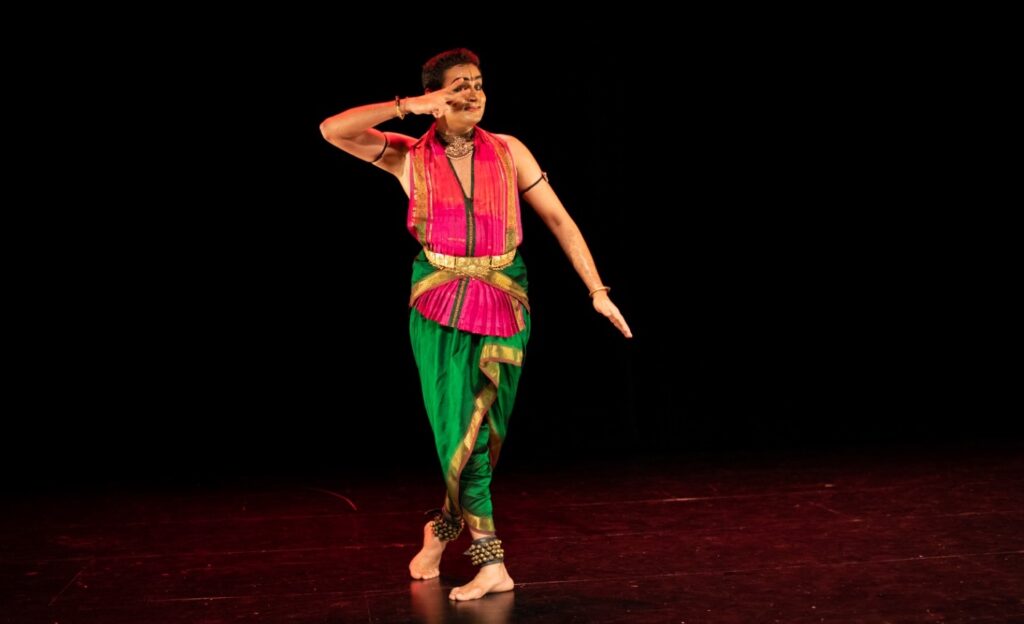
Finding life’s purpose through Dance & Mental Health Advocacy- an interview with Lalitha Venkatasubramanian By Vidhya Nair “The mantra that I try to live by is “try your best and do what you can”. Celebrating my own small successes is key to keeping myself motivated. Dance provides me with an oasis of calm, a refuge which I can turn to when the going gets tough. My own mental health journey was the impetus for my work “Finding Dignity – An exploration of mental illness through Bharatanatyam”. Apart from being a cathartic process for me, it allowed me to push the boundaries of Bharatanatyam – engaging the audience on an emotional level through art while putting across key messages on mental health issues.” Over the decades, Lalitha has been a student of dance which has helped shape her life and added meaning and purpose. She shares her reflections on her dance journey in this interview. VN: Tell us about your growing up years in Singapore and your early memories of family life. LV: I was born and brought up in Singapore as my parents had come to Singapore from India in the 1950’s. I am the youngest of 4 children, our childhood was centred around our studies but it was a carefree time. I recall many afternoons and evenings after school spent playing with neighbours on the streets of Sturrock and Piggott Road (off Balestier Road) where we lived. Two weekday afternoons were spent going for dance classes and on Sundays, it was a long sojourn involving 3 bus changes, to Branksome Road at Katong where I studied Carnatic vocal classes at the Singapore Indian Fine Arts Society (SIFAS). When SIFAS moved to Norris Road and then to the corner of Balestier Road/ Serangoon Road, I continued there. And briefly also learnt the Veena. Living around the Balestier area, visits to the Perumal Temple and the Vadapathra Kaliamman temple were very much a part of our daily routine. VN: What was your earliest memories of dance classes at Apsaras? LV: At Balestier, we were just around the corner from Kamala Club where Mami was conducting her classes. This is where I started my classes with Mami. Memories that stay with me are the mid-afternoon walks from home to Kamala Club in the intense heat. The whirring of the fans and the cool tiled floor were a welcome reprieve from the heat. For a skinny and tongue tied 12 year old, Mami appeared to be a larger than life figure, a formidable and fearsome presence. Yet, as I started the classes, it became clear that her teaching style was anything but fear inducing – firm yes, but gentle and patient at the same time. VN: What was your relationship like with Mami? LV: During my individual classes with Mami in the late 90’s and 2000’s, Mami provided a comforting presence – her classes were a home away from home. Entering her classroom during the afternoons with no one else around, transported me to a spiritual sanctuary. VN: How did you balance running a home, having children, raising them and having a career? LV: As most working mothers would attest to – it was not easy and I will definitely say that I was no super woman. There were several times over the years during which I took a few years’ hiatus from dance – when in university [ Lalitha graduated with a Bachelor of Accountancy from NUS and practiced as an accountant and tax consultant. She also earned a Masters in English Language (Teaching) and made a mid-career switch to teaching for some years. She has since reverted back to tax consultancy since 2015 on a freelance basis and has upgraded herself with relevant qualifications as recently as 2018] and when I had each of my 3 children. My husband Ramani, has been a pillar of support all these years – supporting me through the journey. He has always encouraged me to continue my passion and even after our busy work days, he would look after the children whenever I went for night classes with Mami, bringing them to fetch me from the late classes so that I could see them before they went to sleep. I have also benefited from having the support of good helpers along the way, a blessing which I humbly acknowledge that I am privileged to have. VN: With Mami now no more, how to you keep your connection to her teachings? LV: Dance has become a spiritual path for me – my yoga, my prayer, my connection with the divine. This I attribute to Mami – she used to emphasise the need for divinity in dance, to elevate oneself as well as the audience to a higher spiritual plane. An ethos, borne of the Kalakshetra tradition, lived and breathed by Mami – an ethos which she has passed on. VN: What has helped you retain your spark and interest in Bharatanatyam all these years? LV: Bharatanatyam transports me to a different world, beyond the mundane and over the years it has taken on a different significance in my life, becoming my personal spiritual journey. The breadth of the poetry and literature that it draws from, the depth of the abhinaya exploration that it allows for, the visual poetry that it creates, the divinity that is inherent in the form – these are aspects that, rather than just retain, have increased my interest in Bharatanatyam. I have also been encouraged by following the journeys of my fellow Singaporean dance mates, although our paths have been different, we are connected by our love of dance. In particular, I have been inspired by the wonderful work being done by Uma Chetty in Apsaras Arts, Virginia whose passion, enthusiasm and drive to propagate the art is truly amazing. I still have fond memories of the programme in 1993 done at the (then) PUB auditorium with both of us bonding over our shared accounting and dance experiences! VN: How to you keep up your own dance training? What does it take – as